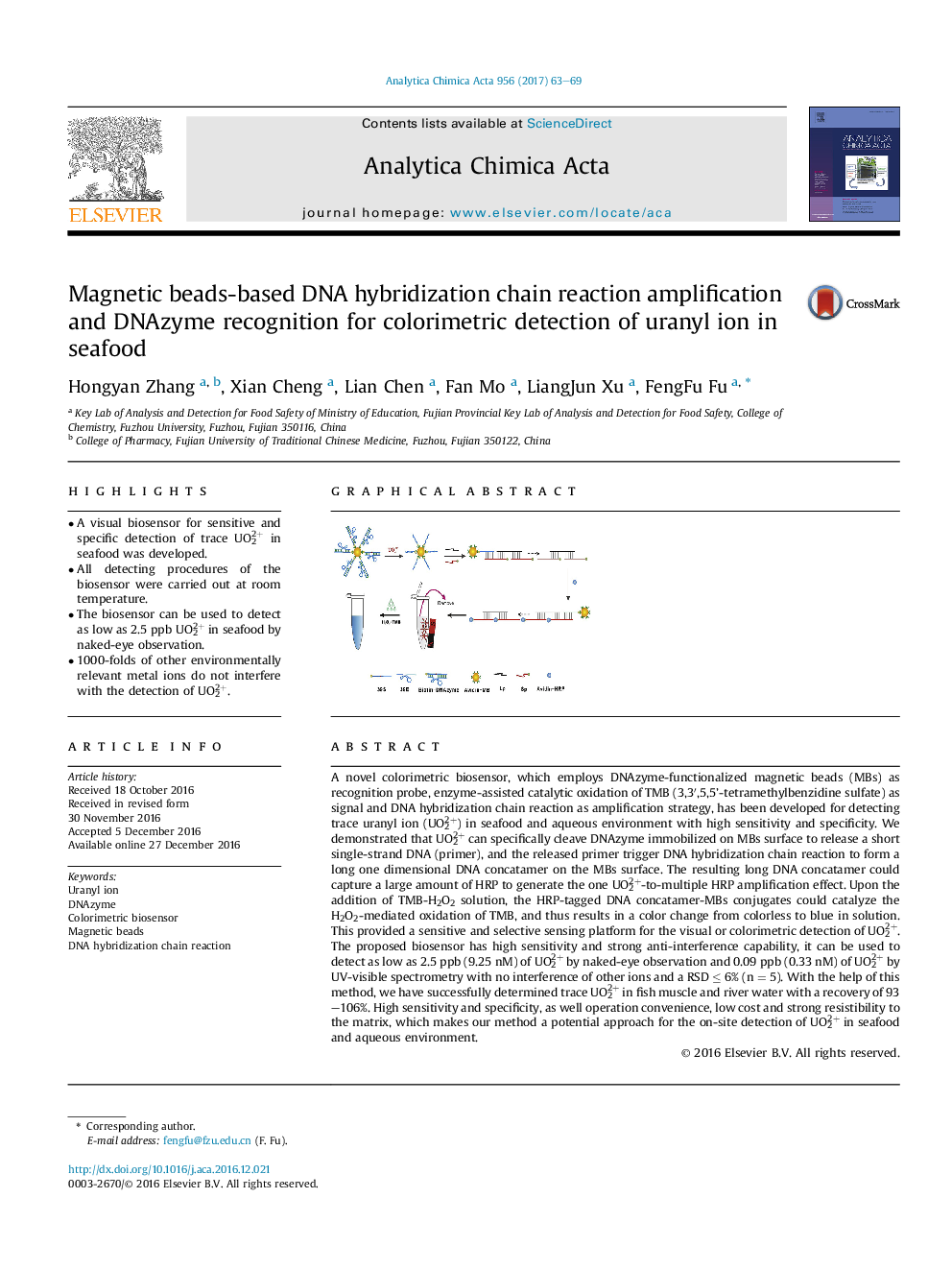| کد مقاله | کد نشریه | سال انتشار | مقاله انگلیسی | نسخه تمام متن |
|---|---|---|---|---|
| 5131275 | 1490876 | 2017 | 7 صفحه PDF | دانلود رایگان |

- A visual biosensor for sensitive and specific detection of trace UO22+ in seafood was developed.
- All detecting procedures of the biosensor were carried out at room temperature.
- The biosensor can be used to detect as low as 2.5Â ppb UO22+ in seafood by naked-eye observation.
- 1000-folds of other environmentally relevant metal ions do not interfere with the detection of UO22+.
A novel colorimetric biosensor, which employs DNAzyme-functionalized magnetic beads (MBs) as recognition probe, enzyme-assisted catalytic oxidation of TMB (3,3â²,5,5'-tetramethylbenzidine sulfate) as signal and DNA hybridization chain reaction as amplification strategy, has been developed for detecting trace uranyl ion (UO22+) in seafood and aqueous environment with high sensitivity and specificity. We demonstrated that UO22+ can specifically cleave DNAzyme immobilized on MBs surface to release a short single-strand DNA (primer), and the released primer trigger DNA hybridization chain reaction to form a long one dimensional DNA concatamer on the MBs surface. The resulting long DNA concatamer could capture a large amount of HRP to generate the one UO22+-to-multiple HRP amplification effect. Upon the addition of TMB-H2O2 solution, the HRP-tagged DNA concatamer-MBs conjugates could catalyze the H2O2-mediated oxidation of TMB, and thus results in a color change from colorless to blue in solution. This provided a sensitive and selective sensing platform for the visual or colorimetric detection of UO22+. The proposed biosensor has high sensitivity and strong anti-interference capability, it can be used to detect as low as 2.5 ppb (9.25 nM) of UO22+ by naked-eye observation and 0.09 ppb (0.33 nM) of UO22+ by UV-visible spectrometry with no interference of other ions and a RSD â¤Â 6% (n = 5). With the help of this method, we have successfully determined trace UO22+ in fish muscle and river water with a recovery of 93-106%. High sensitivity and specificity, as well operation convenience, low cost and strong resistibility to the matrix, which makes our method a potential approach for the on-site detection of UO22+ in seafood and aqueous environment.
162
Journal: Analytica Chimica Acta - Volume 956, 1 March 2017, Pages 63-69